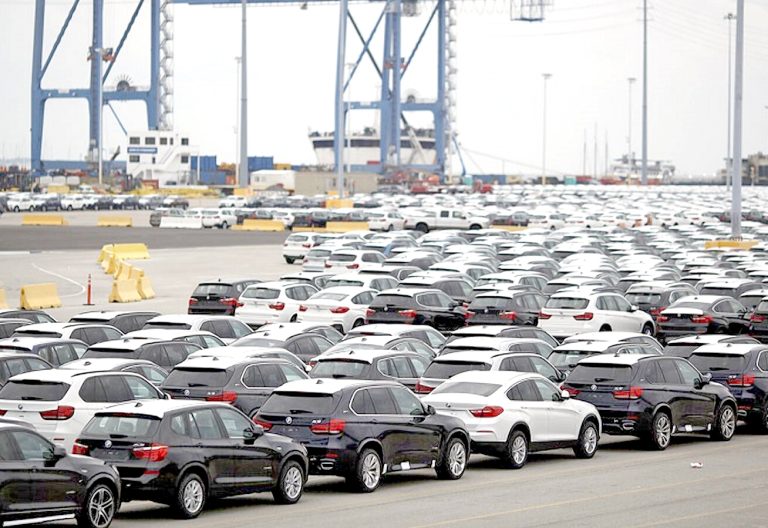How new car tax rules will hit Kenyan motorists

Come July 1, 2025, importing a used car into Kenya will become a costly affair, thanks to a decision by the Kenya Revenue Authority (KRA) to introduce a new way of valuing imported vehicles.
The move, which involves adopting a revised Current Retail Selling Price (CRSP) schedule, is already stirring anxiety across the auto industry. For many Kenyans, especially first-time car buyers and middle-income earners, the dream of owning a modest used car like a Toyota Vitz may soon feel out of reach.
The CRSP system isn’t new in principle—KRA has long used estimated retail values to calculate taxes on imported vehicles. But this time, the authority intends to overhaul how these values are determined.
Instead of relying on a broad reference list, they will now assess each vehicle using its actual purchase price, often referred to as the “transaction value”, which includes the cost of the car itself, shipping, insurance, and any other related fees.
On the surface, it sounds like a fair approach: charge tax based on what was actually paid. But the implications for everyday Kenyans are far more complex.
Effect on small cars
Car dealers and importers are warning that this change will cause the prices of small used cars to surge by between Ksh700,000 and Ksh800,000.
That’s not a mild bump in price—it’s a steep incline that threatens to lock ordinary Kenyans out of the second-hand car market entirely.
A Toyota Vitz, which for years has been the poster child for affordability and reliability, is likely to become a luxury for the few rather than a practical choice for the many.
The effect won’t just be felt by car buyers. This shift in valuation method means importers must now produce complete documentation to justify the actual purchase price of each vehicle.
Invoices, shipping bills, insurance records—everything must be accounted for, or risk delays and penalties.
For smaller traders, who often work within margins and with limited staff, this adds another layer of bureaucracy. Some may be pushed out of business altogether.
Aligning tax systems
KRA argues that this move is part of aligning Kenya’s tax system with global standards.
Under the World Trade Organisation’s customs valuation rules and the East African Community protocols, countries are required to use the transaction value for imported goods unless there’s evidence of fraud.
In fact, a 2018 court ruling—Petition No. 190—directed KRA to stop using the old method of arbitrary estimations and instead base duties on real-world prices. So, the agency insists it is simply complying with the law.
Even so, the timing and manner of implementation have drawn heavy criticism. Industry groups such as the Car Importers Association of Kenya (CIAK) argue that KRA failed to engage stakeholders before rolling out the new CRSP system.
This lack of consultation, they say, violates constitutional requirements on public participation in policy changes that directly affect livelihoods. Already, the association has filed legal challenges against the new schedule, citing inflated valuations and procedural unfairness.
Beyond the legal arguments, the economic ripple effects are hard to ignore. Importers may choose to pass on the added costs to customers.
That will hurt not just individual buyers, but also a wide range of small businesses that rely on affordable cars to move people and goods. Taxi drivers, ride-hailing service providers, logistics operators, and rural families all face the same reality: higher costs, lower margins, and fewer options.
For many Kenyans, car ownership has never been a luxury—it’s a lifeline. A small hatchback like the Vitz or a Mazda Demio isn’t just a mode of transport; it’s a means of earning a living, attending school, or transporting sick relatives.
A change in valuation policy might look like a technical adjustment on paper, but on the ground, it’s felt like a blow to opportunity.
There’s also a larger question of how this move fits into the government’s economic strategy. Officials have suggested that making imports more expensive could boost local vehicle assembly by driving demand toward domestically produced cars.
In theory, this would stimulate manufacturing, create jobs, and help Kenya move up the value chain.
But critics say that without sufficient local production capacity or supportive policy frameworks—like tax incentives, reliable power supply, and affordable credit—this vision is more rhetoric than reality.
Already, the effects of high vehicle costs are showing in the market. New car sales fell by 15 per cent in 2023, and there are signs that second-hand imports may follow the same downward trend in 2025.
The weakening Kenyan shilling only compounds the problem, making both cars and the duties charged to them even more expensive.
As currency devaluation continues to bite, families are forced to delay or abandon their plans to buy cars, taking a toll on household mobility and spending power.
Online, Kenyans have not held back their frustration. On social media platforms like Reddit, many lament that the rising cost of car ownership feels like being taxed for daring to aspire to a decent life.
“This is America-level taxation without America-level pay,” one user quipped. Others pointed out that with nearly 60 per cent of a car’s value now going to taxes and levies, KRA seems to be the biggest winner in every transaction.
Over-taxation anger
With just weeks left before the new CRSP rules kick in, many are calling on the government to reconsider—or at least phase in the changes gradually.
Stakeholders want a more transparent and predictable system that doesn’t punish ordinary Kenyans trying to own basic, efficient vehicles. And while aligning with global customs rules is important, critics insist that fairness must come before formality.
Whether KRA chooses to adjust the course remains to be seen. But one thing is certain: unless something changes soon, the cost of getting behind the wheel in Kenya is about to go up—dramatically and perhaps irreversibly.















